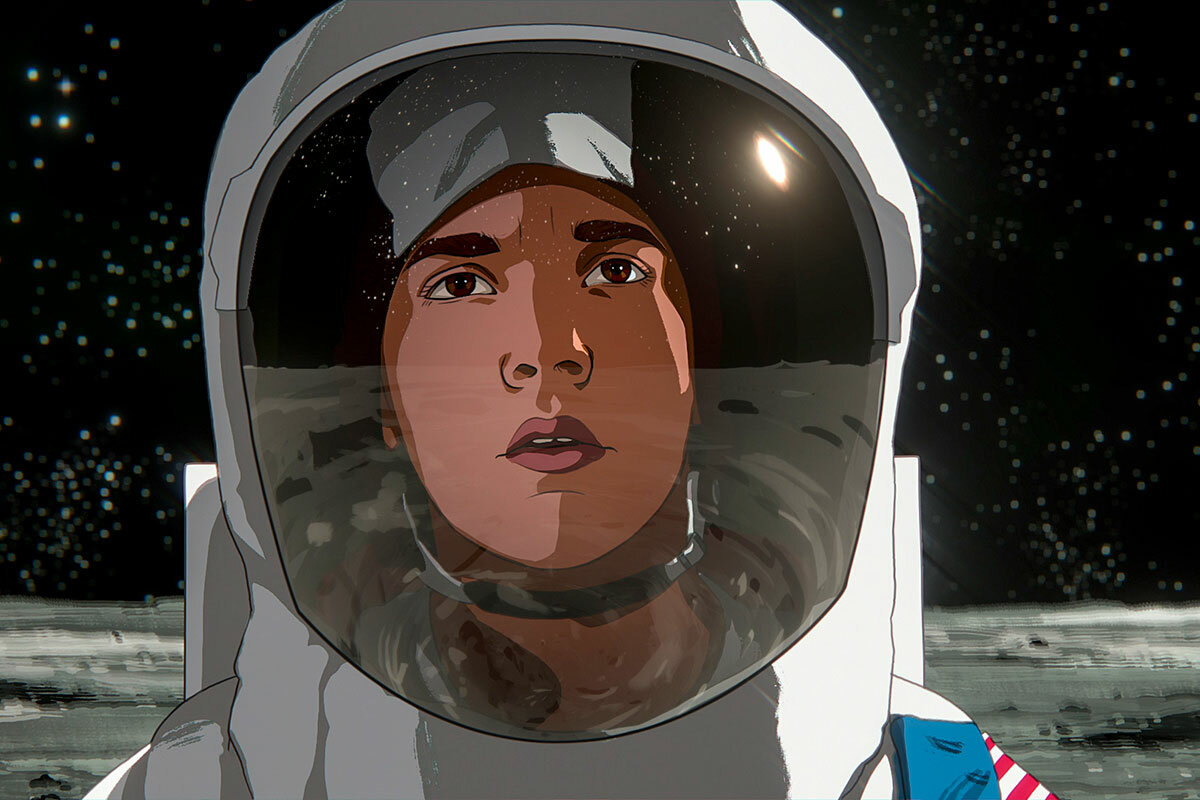Richard Linklater is a nostalgist in the best sense, and never more so than in his terrific new film, “Apollo 10½: A Space Age Childhood.” As a writer-director, he draws on his memories of the past in order to enhance his apprehension of the present. Best of all, he does so without the usual sentimentalizing that often accompanies semi-autobiographical coming-of-age yarns.
Like Linklater’s earlier “A Scanner Darkly” and, especially, “Waking Life,” “Apollo 10½” is a first-rate example of rotoscope animation, in which live-action footage is digitally painted over to create a fanciful, hyper-realistic effect. The technique perfectly suits Linklater’s subject. He wants to show what it was like for a NASA-obsessed 10-year-old suburban Houston boy to grow up in the dawn of the 1969 Apollo 11 moon launch.
The film’s narrative is bifurcated. In the beginning, we appear to be watching a tall tale featuring the young Stan (voiced by Milo Coy), who claims he was chosen by NASA for a top secret pre-Apollo 11 moon mission because he fit into the too-small capsule the engineers mistakenly designed for the adult astronauts. After a bunch of backstory involving his fifth grade antics and his large, unruly family – he’s the youngest of six kids – his rambling account abruptly halts soon after he blasts off.
For much of the rest of the film, except for occasional cutaways to young Stan’s imaginings, the adult Stan (voiced by Jack Black) narrates what really happened. These scenes are fanciful in their own way: They point up how seemingly mundane events, filtered through the haze of time, can appear equally magical.
What gives the movie its considerable homegrown charm is Linklater’s affection for this late ’60s era and how it formed Stan. Although Linklater has said the film doesn’t duplicate his own Houston childhood – his father, for example, unlike Stan’s, didn’t work for NASA – what comes through seems highly personal anyway. The specificity of detail and incident in this film is lovingly rendered. The soundtrack is a melange of ‘60s pop tunes, and Linklater employs them not simply as an oldies soundtrack but also to convey how Stan and his siblings experienced them as the soundtrack to their lives.
Because of Linklater’s fond presentation, everything concerning Stan is resonant: The cheesy sci-fi films and shows like “Dark Shadows” that he watches on the family’s black-and-white, rabbit-eared television set; the overchlorinated public swimming pools; the meals of tuna casserole with potato chips; the trips with his grandmother to see “The Sound of Music”; the way he hated watching the Disney TV show on Sunday nights because it always meant he had to go to school the next day. He describes the “special comfort of falling asleep in the car” after a family outing.
Stan’s thrill ride at the AstroWorld amusement park, the morning before that evening’s Apollo 11 moon landing, represents his own flight into the unknown. (Elsewhere in the film, in a fantasy cutaway, he imagines himself in his Apollo capsule reading Mad Magazine.) When it actually comes time to watch Neil Armstrong’s first steps on the moon, an exhausted Stan has already fallen asleep. His mother carries him off to bed with words that could easily serve as the film’s summary: “He’ll think he saw it all. You know how memory works.”
Linklater certainly does. That’s why, even though he doesn’t downplay the Vietnam War that periodically breaks into the TV news, he recognizes that, for Stan, that conflict is background noise. “Apollo 10½” is a portrait of innocence untainted by any agenda other than the need to convey as honestly as possible what it felt like to be that particular boy at that particular moment in history. It’s a movie about how we conjure and commemorate our pasts.
Peter Rainer is the Monitor’s film critic. “Apollo 10½” is rated PG-13 for some suggestive material, injury images, and smoking. It is available on Netflix starting April 1.






